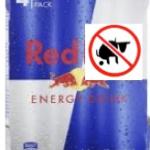If you ask a chemist "What element with a one-letter symbol should really have a five-letter symbol instead?" many would say sulfur.
Food & Nutrition
Food waste occurs everywhere along the food chain from farm to table, and some estimates suggest that a quarter of the planet could be fed a substantial diet just from food waste.
Alcohol is bad again. Sometimes, epidemiologists tell us it's good, but today, they're telling us it's bad. What else is bad? The study that arrived at that conclusion.
The Environmental Working Group has once again released their Dirty Dozen list — the fruits and veggies they say are covered in pesticides. One minor detail: organic produce contains pesticides, too, but that doesn't quite fit their narrative.
All of us diet soda aficionados have had this experience at least once, right?
In our latest #KuriousKiddos segment, Elliot and Sullivan want to know whether or not the legend of swallowing gum is true.. Will you become part Wrigley if you swallow the rubbery goodness?
"Attn:" is an activist website that produces extremely popular videos, some of which feature the esteemed scientist (all actors consider themselves scientists) Zooey Deschanel.
It is Easter, and all of our thoughts turn to candy as we spend $2.1 billion, roughly $28 per person.
As every educated foodie knows, one of the world's best superfoods is quinoa. The only problem is that there's no such thing as a superfood, and there's nothing particularly unique about quinoa.
Trying to determine the causative agent for outbreaks of foodborne illnesses can be a gargantuan epidemiological task.










